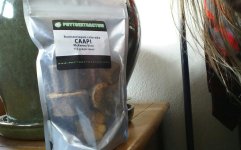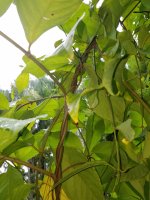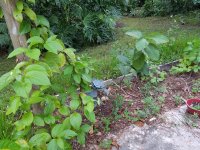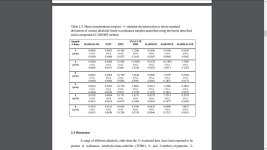I had a whole reply that just died in an internet hiccup, so please excuse the relative brevity, as I'm rather bummed that my prior post is gone.
None of the things being discussed as "species" or "varieties" in this thread are species or varieties. Industrial botany doesn't recognize any subspecies or varieties of B. caapi. "Plowman 6041" in the case of Mckenna is a cultivar, not a subspecies or variety, and Dennis notates it as such in the literature where he cites it (although he uses the more convoluted method of a non-italicized parenthetical rather than the cv. notation, the designation still stands as cultivar).
We've covered this in other threads, but even in the video in the OP, Mckenna states "The ayasqueros recognize types of ayahuasca more differentiated than the species." This is all well and good, but it's entirely unhelpful when trying to clarify these plants within the context of industrial botany for two reasons.
1) Botany doesn't recognize these "subspecies" and/or "varieties." No industrial botanist, afaik, has engaged in any treatment or monograph of these plants. We essentially have nowhere to park any of these folk designations within botanical nomenclature or taxonomic systems because, as far as industrial botany is concerned, they don't exist. Even the most argued-for "varietals" (caupuri and tukanaca) have no industrial botanical justification for varietal designation.
This creates additional problems when we consider that:
2) Different groups of indigenous folks have different names for the "same" plants. Or they draw different differentiations between folk varieties. Or they have similar names for different plants. Without having industrial botanical distinctions (or some other "standard" reference) for these folk varietals, we have no standard through which to compare these different folk varietals, we can only compare them against each other, which lends a mercurial quality to the attempt at codifying them and leaves us just as lost vis a vis industrial botany.
When you then throw in vendors and profit motives, all bets are off. We've already had vendors admit to us that they sell plants as "black ayahuasca" because if they used the botanical name(s), no one would buy it because they wouldn't recognize it.
tl;dr
-There is no mckenna caapi variety (at most it's a cultivar).
-Color distinctions are folk distinctions and have no tie-ins to latin nomenclature or industrial botany.
-Vendors and preserves have their own motivations for what makes it to market and may have no interest in divulging what they've got on-hand, or where it came from, to the general public. They have their own interests relating to their sourcing, operations, safety, etc. Take everything with a grain of salt. (I don't mean this negatively, just that there are reasons for discretion on their end)
-You can't make anything approaching meaningful ID from dried bark/vine.
-You can't trust vendors, especially on dried plant ID.







